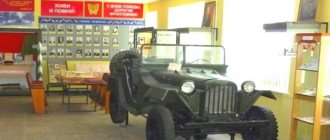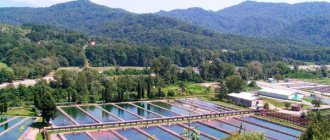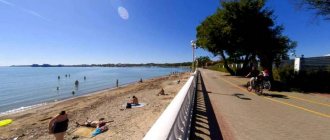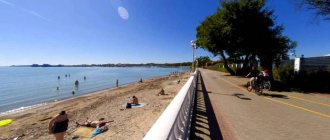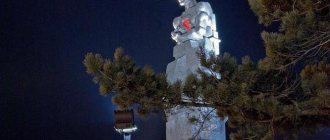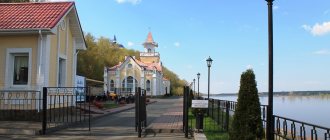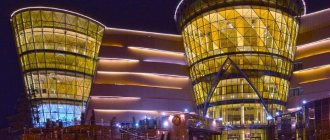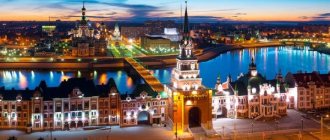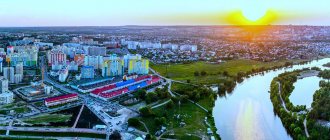The official date of foundation of the modern metropolis - the capital of the Republic of Bashkortostan, is considered to be 1574. However, mentions of the ancient city at the confluence of the Belaya, Ufa and Dema rivers are found in the chronicles of the Golden Horde; under the name Paskerti it appears on the Mercador map. Today, Ufa, with its population of millions, is the most important industrial, logistics and cultural center of the Volga region. It covers an area of more than 707 km², and in terms of population density it is considered the most spacious million-dollar city in the country. The colorful sights of Ufa, photos and descriptions of which you will find in the article, are visited by tens of thousands of tourists every year.
Monuments of Ufa: where to start
Not everyone knows that the capital of the Republic of Bashkortostan has a unique calling card. We are talking about such a majestic structure as the monument to Salavat Yulaev. Any local resident can tell you the address of the attraction; it is located on the territory of the park named after Salavat Yulaev. This character played an important role in the history of the Bashkir people. Scientists still cannot decide whether he was a criminal or a hero. The debate continues, but the popularity of the monument among the local population and city guests remains unchanged.
The grand opening of the monument took place in 1967. A realistic, “living” structure glorifying the image of a national hero, immediately eclipsed all other monuments in Ufa. The total weight of the monument is 40 tons; a heavier equestrian statue cannot be found on the territory of the Russian Federation. The monument is also interesting because it has only three support points at a height of ten meters. It is also worth knowing that the image of the statue was used to create the coat of arms of Bashkortostan.
National Museum of the Republic of Bashkortostan
The history, culture, nature and riches of the region, the way of life of the peoples of Bashkiria, their traditions from the Stone Age to the present day are told by 140 thousand exhibits of the museum, occupying 35 halls.
The museum, the largest in the republic and one of the oldest in Russia, has been operating for a century and a half. The constant attention of visitors is attracted by the collections of butterflies and aquariums with fish and amphibians, and in the wildlife department you can directly get acquainted with the “exhibits” - animals living in the region.
A separate exhibition is dedicated to bees, because Bashkir honey is today an internationally recognized brand.
Symbol of friendship
Another famous city building is the Friendship Monument. Ufa acquired this monument when the 400th anniversary of the annexation of Bashkiria to Russia, which occurred on a voluntary basis, was celebrated. Initially, the creators also wanted to locate the Museum of Interethnic Friendship under this building, but the project was not implemented.
The monument rises on the mountain, which in the old days was decorated with the Ufa log fortress. Nowadays, this is Pervomaiskaya Square, in the center of which the building is located. The height of the monument is 35 meters; the building has the shape of a sword, the hilt immersed in the ground. The form was chosen specifically to speak of peace concluded between representatives of two nationalities. The idea of friendship is emphasized by two female figures, one of them, according to the creators’ idea, belongs to a Bashkir, the other to a Russian. Women offer wreaths to each other as a sign of reconciliation.
Ufa history and architecture
Over its long, eventful history, the city has acquired many historical monuments and architectural wonders. You can admire them while walking along the streets of Ufa. Souvenir photos of local attractions will decorate any traveler’s album.
Rodina cinema building
- Address: st. Lenina, 42. Transport stop "Cinema Rodina".
The popular cinema is located in a building that looks more like a palace in appearance. A magnificent mansion with a luxurious colonnade in the best traditions of the Stalinist Empire style, was erected in 1953. It delights with proportionality and impeccable lines, pleasing the eye with the openwork decor of the facade. The carved pediments, elegant stucco molding of the friezes of the columns, and the painting of the vault of the portico arch look amazing. It is in several halls of the cinema, equipped with the most modern rental equipment, that premiere screenings of the best films take place.
Gostiny Dvor
- Address: Verkhnetorgovaya Square, 1. Transport stop "Gostiny Dvor".
The center of trade in Ufa, like most large provincial cities in the pre-revolutionary era, was the Gostiny Dvor, built in the second third of the 19th century. Like most similar buildings, it had the shape of a rectangle, limited along the perimeter by arched galleries. Gostiny Dvor regularly fulfilled its tasks until the war began. In 1941, the building housed the workshops of spinning and weaving factories evacuated from Serpukhov , and then a cotton mill. In the early 80s of the last century, the dilapidated Gostiny Dvor was almost demolished, but the public managed to defend the iconic landmark. After extensive reconstruction, it turned into a modern shopping center.
Marten house
- Address: Verkhnetorgovaya Square, 1. Transport stop "Gostiny Dvor".
A sculptural composition dedicated to the charming animal depicted on the coat of arms of Ufa appeared in the capital of Bashkortostan in 2010. Its opening was timed to celebrate the Day of Family, Love and Fidelity. Indeed, in nature, martens live in pairs and take touching care of their offspring. Therefore, the bronze tree, on whose branches there is a fairy-tale house and a couple of fluffy symbols of the city, has become a mandatory stopping place for wedding processions. Numerous guests of Ufa are no less willing to take photographs against the backdrop of the colorful monument.
Monument to A. Matrosov
- Address: Garden of Alexander Matrosov. Transport stop “Park im. Lenin".
In the short but very bright life of the hero, who without hesitation gave his life for his Motherland in 1943, covering with his body the embrasure of the fascist bunker, much is connected with Ufa, although he was born in Dnepropetrovsk. It was in the Volga city that the character of Alexander, who was orphaned early and brought up in a local labor colony, was formed. Today in Ufa there are two monuments to the hero. The oldest of them was installed in 1951. The bronze figure of Matrosov, in full uniform and with a machine gun in his hand, stands on a granite pedestal in the garden that bears his name.
Modern style
Of course, the pride of city residents is not only the Friendship Monument. Ufa also has more modern monuments. An example is the building called I love Ufa. As follows from the name of the monument, as well as the features of its appearance, it was used to declare love for the “heart” of the Republic of Bashkortostan. The amazing monument is easy to discover; it is located right behind the National Youth Theater, which is located on the Square of Two Fountains.
The art object is a combination of the name of the locality in the Bashkir language, the English letter I and the heart sign. Musicians and artists like to hold concerts near this building. Of course, next to the spectacular building in red and white colors, someone is always taking pictures.
Bashkir State Art Museum named after. M.V. Nesterova.
Among the museums existing in Ufa, tourists like to visit the Nesterov State Art Museum. In addition to sculptures and engravings by ancient European masters, its exhibitions include more than 12,000 paintings by Russian, German, Italian and French painters of the 15th-19th centuries, and some exhibits of applied art date back to the 12th century. Canvases by contemporary artists of the region are also presented here.
Original monument
The monuments located on the territory of the city reflect not only its history, but also its atmosphere and lifestyle. The population pays maximum attention to improving the territory and maintaining cleanliness. It is not surprising that among all the local monuments, the Janitor Monument plays an important role. Ufa acquired this original statue only in 2007; you can see it on Oktyabrya Avenue, it is located right in front of the entrance to the Mir shopping center.
The monument is made of bronze; the total weight of the “janitor” and his tool is 300 kg. The opening of the monument was timed to coincide with the 450th anniversary of the annexation of the Republic of Bashkortostan to Russia. The bronze wiper serves as a reminder that city streets should remain clean and elegant.
City temples and mosques
The multicultural metropolis is inhabited by people of different nationalities who practice their traditional religions. Orthodox, Muslims, Catholics, and Buddhists have lived here in peace for many centuries. Therefore, connoisseurs of religious architecture will find something to see in Ufa.
The first cathedral mosque
- Opening hours: daily, from 8:00 to 21:00.
- Telephone.
- Address: st. Tukaeva, 48. Transport stop “Novomostovaya Street”.
Several interesting facts are connected with the oldest mosque in the city. It was erected in 1830 not with funds from the Mohammedan spiritual administration, but with donations from the wealthy merchant M. Khozyaseitov. Until the 20s of the last century, the temple was considered the main shrine of the country's Muslims and was not closed during times of persecution of religion. The mosque building with a 28-meter minaret has been among the main architectural monuments of Ufa for many years and was even depicted on a Russian Post stamp issued in 2001.
Church of the Nativity of the Virgin Mary
- Opening hours: daily, from 7:30 to 18:30.
- Telephone.
- Address: st. Kirova, 102. Transport stop “Kirova Street”.
The cathedral, consecrated in 1909, is not only the largest existing Orthodox church in Ufa, but also an architectural gem of regional significance. The domes of the five-domed temple rise 25 m above the ground, and the height of its bell tower is 47 m. During the years of persecution of religion, the cathedral housed a cinema. After the building was returned, it took believers more than 12 years to restore it to its historical appearance. Today the temple looks amazing. Its interiors are decorated with white, pink, yellow marble. The church houses many shrines, including about 25 especially revered Orthodox icons.
Madina Mosque
- Opening hours: daily, from 7:00 to 19:00.
- Address: st. Gatchinskaya, 1. Transport stop “Gatchinskaya Street”.
The mosque, built in 2013, is interesting for several reasons. Firstly, it is an excellent example of the Sunni trend in Islamic architecture. Secondly, cabinetmakers from Egypt and artists from Samarkand were invited to decorate its interiors. According to the Sunni tradition, minarets do not stand separately from the main building, but seem to grow out of it. The height of the main of the four towers is 10 m, and the mosque itself rises to 39 m. The temple, which attracts with its original architecture, looks very elegant.
Monument-fountain
Among the unusual buildings located in the city, not only the Janitor's Monument occupies a special place. Ufa also has such an original structure as the “Seven Girls” fountain, the grand opening of which took place in 2015.
The creators of the monument took inspiration from an ancient Bashkir legend dedicated to the story of seven girls taken captive. They managed to break free, but they were chased. The beauties chose to drown themselves in a deep-sea lake, refusing to become slaves again. The fountain, sparkling with multi-colored lights in the evening, is located on the territory of Theater Square; you can find it right in the center. Next to it there is a large screen that serves to broadcast a recording of the dance of the same name.
Sculpture House of the Marten
Of undoubted interest to tourists is the symbolic monument dedicated to eternal love called “The House of the Marten.” Don’t be surprised, the martens Fanur and Leysan are important Bashkir mythical characters symbolizing love and fidelity, and this sculptural composition has become a beautiful illustration of the famous Bashkir legend of love.
Bashkir Academic Drama Theater named after Mazhit Gafuri
Bashkir Order of the Red Banner of Labor academic...
Ufa
The Bashkir Drama Theater named after Mazhit Gafuri is the first republican theater. In 1919, it opened with the play “The Hero Salavat” based on the dramatic chronicle of the poet Fathelkadyr Suleymanov.
Currently, the Mazhit Gafuri Theater is called the custodian and successor of Bashkir national art. Over its almost century-long history, the theater stage has shown more than 600 productions based on works by Bashkir, Russian and foreign authors.
Gostiny Dvor
A favorite place for residents and one of the main attractions of Ufa, Gostiny Dvor is located in the historical center of the city. The building was built at the beginning of the 19th century, but today it houses modern shops and an entertainment and business complex. It is this combination of historical architecture and modernity that makes this place so attractive and popular.
It is worth noting that fairs have been held in Gostiny Dvor from time immemorial. Merchants from all over Russia and Europe came here, and then it became an elite place for the governor, his entourage and wealthy merchants to live. In Soviet times, it was repurposed as workshops and factory premises, as a result of which it completely lost its former appearance. They even wanted to demolish the building, but city residents came to its defense. As a result, it was reconstructed and made the main cultural and business complex of the capital.
8
